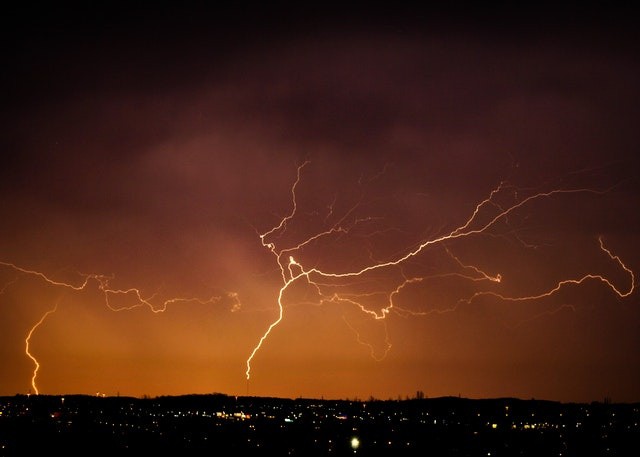Experts have found what seems to be the earliest documented report of a rare meteorological event known as ball lightning in England.
It has been characterized as a spherical object with an average diameter of about 25 cm, although it can be as large as several meters in diameter.
Professor Brian Tanner, a former physicist, and Professor Giles Gasper, a historian, discovered a link between a medieval manuscript written some 750 years ago and a ball lightning incident while working together at Durham University in the UK.

Ball Lightning: A Rare Weather Event
Ball lightning was first documented in England about 450 years earlier than this narrative by the 12th century monk Gervase of Christ Church Cathedral Priory, Canterbury, according to Metro.
Gervase wrote about a "marvellous sign" that fell near London on June 7, 1195, in his Chronicles, which were written around 1200.
His description went on to include a dense and dark cloud that had white substance coming out of it, and from that white substance, the cloud formed a spherical shape and a blazing ball descended toward the river.
A comparison of Gervase's Chronicle text with historical and contemporary reports of ball lightning was performed by the Durham researchers.
Physicist Brian Tanner, Durham University's Emeritus Professor of Physics, said that ball lightning is a rare occurrence, and its causes are still a mystery.
Earliest Report of Ball Lightning
A white substance emerging from a dark cloud, falling as a spinning blazing sphere, and then having some horizontal motion is extremely similar to accounts of ball lightning from both historical and contemporary sources.
According to BBC, this would be the oldest known report of ball lightning in England if it is, as researchers believ.
Prior to this event, the earliest report of ball lightning from England came during a severe rainstorm in Widecombe, Devon on 21 October 1638.
Only three manuscripts of Gervase's Chronicle and other medieval works exist in their original form, which is unusual because medieval manuscripts rarely survived intact (one in the British Library, and two at the University of Cambridge).
The Latin text was edited by Bishop William Stubbs in 1879 and there is no translation into English.

Primary Focus of Gervase's Writings
Giles Gasper, a professor of history at Durham University said: "The main focus of Gervase's writings was Christ Church Cathedral Priory in Canterbury, its disputes with neighboring houses and an Archbishop of Canterbury, as well as chronicling the actions of the king and his nobles," as per Phys.org.
But his interest was also in natural phenomena including celestial events, signs in the sky, famine, floods, as well as earthquakes.
Having previously reviewed Gervase's records of eclipses as well as his description of the splitting of the crescent moon, experts analyzed his trustworthiness as a writer and a witness.
Given Gervase's reputation as a trustworthy journalist, Professor Gasper believes his story of the fiery globe on the Thames in 1195 was the first time ball lightning had been described convincingly anywhere in the world.
Related Article : Just What is Lightning? Fatal Phenomena Explored
For more news, updates about ball lightning and similar topics don't forget to follow Nature World News!
© 2026 NatureWorldNews.com All rights reserved. Do not reproduce without permission.





